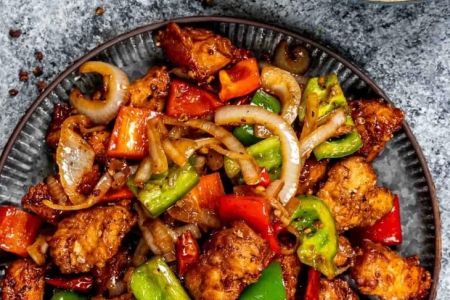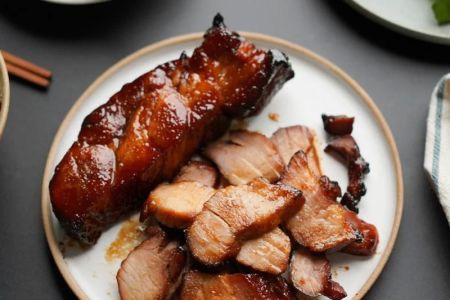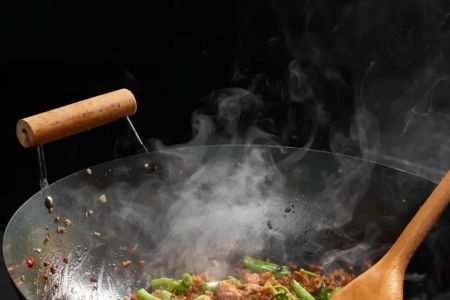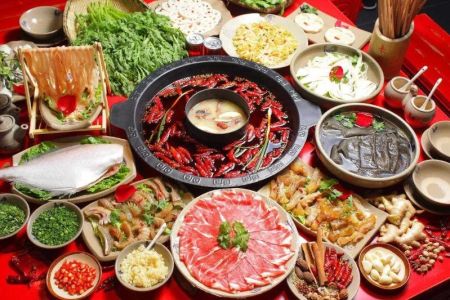How to Make Chinese Restaurant Fried Rice
If you've ever walked into a Chinese restaurant and had a plate of perfectly fluffy, flavorful fried rice, you know exactly what I'm talking about. The rice is light, not greasy, each grain perfectly separated, and it's packed with flavor that makes it hard to stop eating. I used to wonder how they did it. After experimenting and learning a few key tricks, I’ve finally cracked the code for making restaurant-quality Chinese fried rice right at home. Let me walk you through the process, so you can recreate this favorite dish in your own kitchen.
1. The Right Type of Rice
The first step in making great fried rice is choosing the right kind of rice. Chinese restaurants typically use long-grain white rice, often jasmine rice, which has a subtle aroma and cooks up nice and fluffy. But the most important factor isn’t just the type of rice—it's how you prepare it. I’ve learned that using freshly cooked rice can lead to clumpy, sticky results, which is definitely not what we want for fried rice. The best method is to use rice that’s been cooked and then cooled. If you’re in a rush, you can cook it ahead of time and refrigerate it for a few hours or overnight. Cold rice will have less moisture, making it perfect for frying.
2. Essential Ingredients
Next, you’ll need a few essential ingredients to bring your fried rice to life. Here's what you’ll need:
- Vegetables: A mixture of diced carrots, peas, and green onions (scallions) are classic additions. You can also add other vegetables like bell peppers or corn, depending on what you prefer or have on hand.
- Protein: Traditional fried rice usually features some form of protein, whether it’s chicken, shrimp, or pork. For a vegetarian version, tofu works beautifully. Whatever protein you choose, make sure it's cooked and cut into small bite-sized pieces.
- Egg: Eggs are key to creating that beautiful texture in fried rice. Scrambled eggs add richness and help tie everything together.
- Sauces: The sauce mixture is where a lot of the flavor comes from. You’ll need soy sauce for saltiness, oyster sauce for depth, and a bit of sesame oil for that signature Chinese flavor.
- Garlic and Ginger: Freshly minced garlic and ginger are essential for giving fried rice that irresistible fragrance. You can also add a pinch of white pepper if you like a bit of heat.
3. The Cooking Process
Now comes the fun part—the actual cooking! Here’s a step-by-step guide to making Chinese restaurant fried rice:
Step 1: Prep Your Ingredients
Start by chopping all your vegetables and protein into small, even pieces. This will help everything cook quickly and evenly. Mince your garlic and ginger, and set them aside. Beat a couple of eggs in a bowl and set those aside as well. Having everything prepped and ready to go will make the cooking process much smoother.
Step 2: Stir-Fry the Protein and Vegetables
Heat a wok or a large skillet over medium-high heat. Add a small amount of oil—vegetable or canola oil works best for high-heat frying. Once the oil is hot, add your protein (chicken, shrimp, or tofu). Stir-fry it for a couple of minutes until it’s just cooked through, then remove it from the wok and set it aside.
In the same wok, add a little more oil, and then toss in your diced vegetables (carrots, peas, etc.). Stir-fry the vegetables for a couple of minutes until they’re tender but still crisp. The wok’s high heat will help to create that slight char on the vegetables, which adds to the flavor.
Step 3: Scramble the Eggs
Push the veggies to the side of the wok, and pour in your beaten eggs. Let the eggs sit for just a moment before scrambling them. Once they start to set, gently stir them until they’re cooked through. Scrambled eggs should be soft, not dry, so make sure not to overcook them.
Step 4: Add the Rice and Mix
Now, it’s time to add the cold, day-old rice to the wok. Break up any clumps of rice with your spatula so that each grain gets coated in oil. Stir-fry the rice with the vegetables and eggs, mixing everything together. This is where the magic happens—tossing the rice around in the hot wok helps it get that slightly crispy texture that makes restaurant fried rice so irresistible.
Step 5: Season the Fried Rice
Once everything is well-mixed, it’s time to add the seasonings. Pour in a splash of soy sauce, a teaspoon of oyster sauce, and a drizzle of sesame oil. Stir everything together to make sure the rice is evenly coated with the sauces. Taste and adjust the seasoning if needed—add more soy sauce or a pinch of salt to suit your preference. If you like it spicier, a little dash of chili oil or a sprinkle of white pepper adds just the right amount of heat.
Step 6: Add Protein and Garnish
Once your fried rice has the perfect flavor, add your cooked protein back in. Stir everything together, and let it heat through. Then, sprinkle freshly chopped green onions on top for that extra pop of flavor and color. If you like, you can also add a handful of fresh cilantro or a squeeze of lime juice for a fresh, zesty finish.
4. Tips and Tricks for Perfect Fried Rice
As I’ve experimented with this dish over time, I’ve picked up a few helpful tips:
- Use day-old rice: Freshly cooked rice has too much moisture and can lead to mushy fried rice. Cold rice is the key to getting that perfect texture.
- High heat is crucial: To get the signature wok hei (the smoky flavor from stir-frying in a hot wok), you need to use high heat. Don’t be afraid to let your wok get really hot before adding ingredients.
- Don’t overcrowd the wok: If you’re making a large batch of fried rice, it’s better to cook it in batches rather than overcrowding the wok. This ensures everything cooks evenly and doesn’t get soggy.
- Play with flavors: You can always tweak the seasoning to your taste. Add a bit of hoisin sauce, chili paste, or even a touch of sugar for balance.
5. A Personal Story: My First Fried Rice Experience
When I first tried making fried rice at home, I had no idea what I was doing. I threw together some rice, soy sauce, and scrambled eggs, hoping for the best. It was a mess—sticky, bland, and nowhere near the fried rice I loved at restaurants. But I didn’t give up. I kept practicing, tweaking the ingredients and learning more about the technique. With time, I was able to make fried rice that rivaled the restaurant version. Now, every time I make it, I’m reminded of how much I’ve learned and how rewarding it is to master this dish.
6. Enjoying Your Homemade Fried Rice
Once you’ve perfected your Chinese restaurant fried rice, it’s time to sit down and enjoy it. Fried rice is great on its own, but it also makes the perfect side dish to any Chinese meal. Pair it with some crispy spring rolls, orange chicken, or kung pao shrimp, and you’ve got yourself a fantastic meal. The best part? You can make it just the way you like it, with your favorite ingredients and the perfect level of seasoning.
If you're looking to elevate your fried rice even more, consider exploring other Chinese food recipes. It's a great way to learn about different techniques and flavors that will enhance your cooking skills.
So, are you ready to try making your own restaurant-style Chinese fried rice at home? Gather your ingredients, fire up the wok, and get cooking! If you want to learn more or explore other delicious Chinese recipes, check out our offerings at Chinese Food for expert tips and recipes.






![Top Chinese Restaurants for Authentic Cantonese Cuisine in [Your City]](https://img.gochinarose.com/d33/2507/4157910400_450x300.webp)
